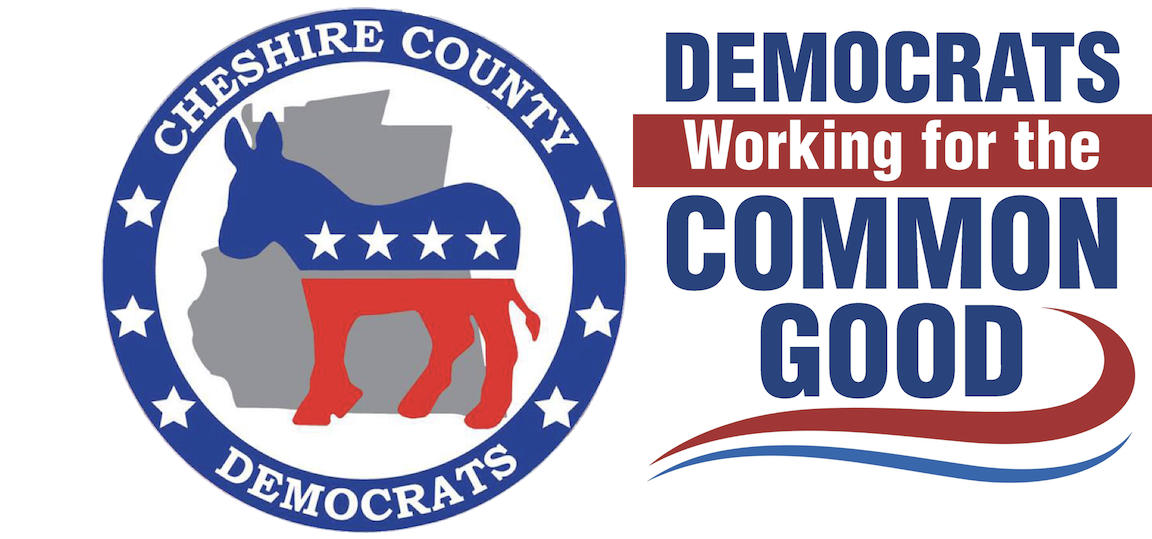Enter a group called New Democracy, a combination think tank and super PAC trying to reimagine the party’s brand in regions where Democrats have suffered deep losses.
Leaders of the group want to focus on rebuilding in states where, during the Obama presidency, Democrats lost nearly 1,000 legislative seats and more than a dozen governor’s mansions.
“Our most important work will be done outside of Washington,” Will Marshall, founder of New Democracy, said in an interview.
The effort is publicly being labeled as “supplemental” to the emerging agenda being crafted on Capitol Hill, including the highly populist “Better Deal” proposal that party leaders in the House and the Senate touted last month. But the new group’s leaders do not see that agenda, including a push for lower prescription-drug prices, as particularly helpful to Democrats in exurban districts or key Midwestern states that President Trump won last year.
“That is an accurate reflection of many Democrats who represent deep blue districts. But it has limited appeal beyond the coasts,” Marshall said.
Senate Minority Leader Charles E. Schumer (D-N.Y.) and House Minority Leader Nancy Pelosi (D-Calif.) have been trying to offer the sort of economic agenda items that can appeal to voters in Iowa as well as California, targeted at working-class voters who abandoned Democrats for Trump.
But some centrists fear that this populist message will be tuned out by heartland voters if it is accompanied by the party’s increasing embrace of staunch liberal positions on cultural matters, including abortion rights and transgender issues.
Should House Democrats write off rural congressional districts?
Marshall helped begin similar efforts as Democrats lost three straight presidential elections in the 1980s, under the auspices of the Democratic Leadership Council and its offshoot, the Progressive Policy Institute.
Back then, operating under the New Democrat banner, the centrists helped create the ideas behind the 1992 presidential campaign of Bill Clinton, who became the first two-term Democrat in the White House since FDR.
New Democracy is taking shape under the failure of another Clinton — Hillary — whose loss to Trump helped solidify the already growing divide between Democrats and voters beyond large urban centers. Several dozen Democrats have signed on with New Democracy, including Colorado Gov. John Hickenlooper, former Iowa governor Tom Vilsack, Pittsburgh Mayor Bill Peduto and Rep. Stephanie Murphy (Fla.), a freshman rising star.
The two Democratic wings could be headed for a fierce clash over what the party needs to stand for in the wake of the stunning 2016 defeat. Sanders, Sen. Elizabeth Warren (Mass.) and other liberals have been making gains in getting congressional Democrats to support ideas, including a $15-an-hour minimum wage and some form of free college, and demanding a full-frontal assault on big banks and big corporations.
So far, however, the college plans pushed by Sanders have not been in the “Better Deal.” Senior Democratic advisers say that their effort has been to embrace economic populism without focusing on less politically popular liberal ideas.
The early portions of the “Better Deal” agenda tilt in the populist direction, with calls for stronger antitrust regulations and tough talk on trade deals. The belief is that white, working-class voters — millions of whom voted for Barack Obama but then Trump — felt left behind in an economy with fewer manufacturing plants, and those jobs went offshore or disappeared through automation.
Marshall and other Democrats fear that the populist tone is built around a negative message of casting blame, and lacks the optimistic tones around which Bill Clinton and Obama built their successful presidential bids.
Combine that negative tone with what critics say is a cultural elitism among urban liberals on social issues, and the centrist wing feels that voters in the heartland simply do not embrace the Democratic message anymore.
“The party’s gotten a little too comfortable with its urban and coastal strongholds,” Marshall said.
New Democracy’s mission statement is even more blunt, warning that both parties have engaged in “a civically corrosive form of identity politics” and that Democrats should “avoid vilifying people whose social views aren’t as ‘progressive’ as we think they should be.”
“For many working class and rural voters, the party’s message seems freighted with elite condescension for traditional values (especially faith) and lifestyles,” the group says.
The first big public event for New Democracy will come at an October summit hosted by Vilsack, who grew increasingly disenchanted last year with what he viewed as the Clinton campaign’s unwillingness to court rural voters.
In the 2008 election, Obama won the Hawkeye State by nearly 10 percentage points, giving Iowa Democrats a 32-to-18 edge in the state Senate and a 56-to-44 edge in the state House. The governor, Chet Culver, was a Democrat, as were four of the state’s seven members of Congress.
In 2016, Trump won Iowa by nearly 10 percentage points, and Republicans now hold a comfortable nine-seat majority in the state Senate and a 19-seat majority in the state House. Trump appointed the state’s popular Republican governor, Terry Branstad, to be ambassador to China.
Iowa now sends just one Democrat to Congress.
That kind of shift happened across many states far away from the Atlantic and Pacific coasts over the past eight years.
It remains to be seen how much efforts like New Democracy really will supplement the party’s efforts to reach new voters — and how much of this will turn into a deep fight with the liberal wing.
New Democracy is reserving the right to wade into primaries to support moderate candidates, which could foreshadow the type of expensive primary battles Republicans have had over the past eight years.
“Obama’s success has masked the narrowing of the party’s appeal,” Marshall said, fearing that Democrats are not reaching beyond liberal elites. “Dogma seems to be in the driver’s seat.”

